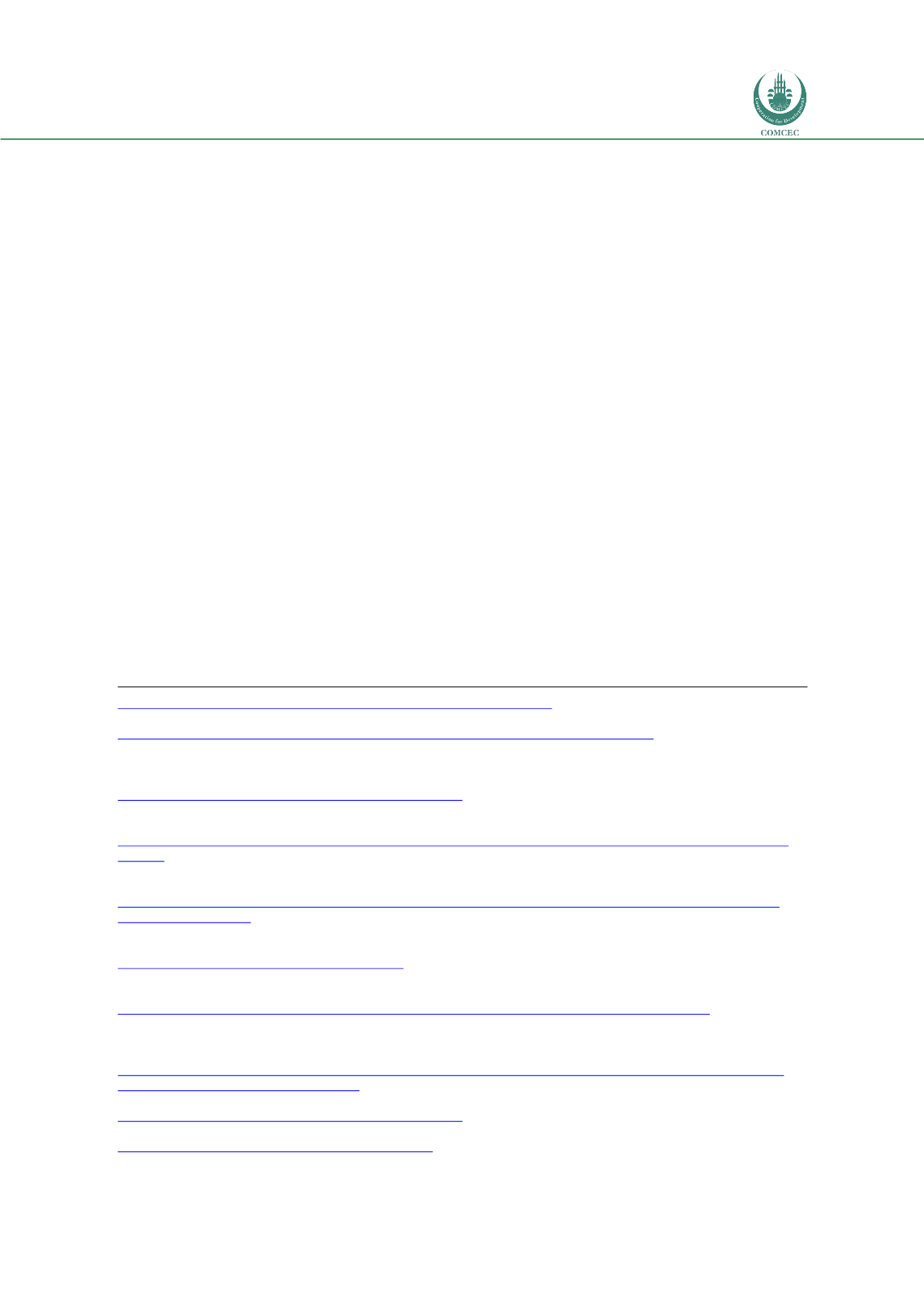

Forced Migration in the OIC Member Countries:
Policy Framework Adopted by Host Countries
69
extraordinary challenges of incorporating 2.7 million people into Turkish social and economic
institutions has left many Syrians subject to poverty and exploitation, even as prospects for
return to Syria remain dim.
In order for Syrians to support themselves in Turkey, incorporation in the labor market and
educational systems are the priorities. Roughly 36 percent of the Syrian population, or about
912,000, are of school age.
6
The prospect of a “lost generation” without schooling is a concern
of the greatest urgency.
7
Further livelihood opportunities for Syrians can be strategically
crafted so that their contributions strengthen Turkish society while alleviating the poverty of
the protected populations. To formulate such opportunities will require upgrades in
institutional capacity, more widespread understanding of legislation and institutional
coordination at all levels of government, and a long-term strategy for how to integrate Syrians
residing in Turkey while maintaining the overall objective of their return to Syria when that
country is secure.
3.1.1.
The Scale and Profile of Forced Migrants
Turkey hosts more refugees and asylum seekers than any other country in the world today.
8
Although Turkey has experienced several migration waves in the decades since the collapse of
the Soviet Union and first Gulf War, current migration from neighboring OIC countries is
unprecedented. In 2007, roughly 12,000 asylum seekers and refugees were registered by
UNHCR in Turkey.
9
By May 2016, the number was approximately 250 times larger. According
to UNHCR, Turkey hosted the world’s 47
th
largest number of refugees and asylum seekers at
the end of 2011.
10
In just three years, it became the largest recipient of refugees, and by the
beginning of 2016 hosted more than 2.7 million registered Syrians and 266,000 registered
non-Syrians benefitting from temporary protection.
11,12,13
http://www.bbc.com/turkce/haberler/2016/07/160703_erdogan_suriyeliler ;Laura Pitel, Turkey plans to offer citizenship
to Syrian refugees, Financial Times, July 2, 2016.
http://www.ft.com/cms/s/0/01766166-409d-11e6-b22f-79eb4891c97d.html#axzz4EPwp5J6v .6
Turkish government figures report that there are 382,972 refugees in the country between the ages of 5 and 9, 287,361
aged 10-14, and 241,711 aged 15-18. Türkiye Cumhuriyeti İçişleri Bakanlığı Göç İdaresi Genel Müdürlüğü (DGMM), “Geçici
Koruma,” updated August 16, 2016,
http://www.goc.gov.tr/icerik3/gecici-koruma_363_378_4713 .7
Human Rights Watch,
‘When I Picture My Future, I See Nothing’: Barriers to Education for Syrian Refugee Children in Turkey
(Human Rights Watch, November 8, 2015),
https://www.hrw.org/report/2015/11/08/when-i-picture-my-future-i-see-nothing/barriers-education-syrian-refugee- children .8
“Turkey largest refugee-hosting country as global numbers hit new record in 2015, UN says,”
Daily Sabah,
December 18,
2015,
http://www.dailysabah.com/world/2015/12/18/turkey-largest-refugee-hosting-country-as-global-numbers-hit-new- record-in-2015-un-says .9
UN High Commissioner for Refugees (UNHCR), BM Mülteciler Yüksek Komiserliği (BMMYK), “Güncel İstatistikler,”
accessed May 5, 2016,
http://www.unhcr.org/turkey/home.php?page=12 .10
UN High Commissioner for Refugees (UNHCR),
UNHCR Statistical Yearbook, 2011, 11
th
edition
(UN High Commissioner for
Refugees, 2013),
http://www.unhcr.org/statistics/country/516282cf5/unhcr-statistical-yearbook-2011-11th-edition.html.11
Kemal Kirişci and Elizabeth Ferris,
Not Likely to Go Home: Syrian Refugees and the Challenges to Turkey—and the
International Community
(Center on the United States and Europe at Brookings, Turkey Project Policy Paper No. 7,
September 2015), 2,
http://www.brookings.edu/~/media/Research/Files/Papers/2015/09/syrian-refugee-international-challenges-ferris- kirisci/Turkey-Policy-Paper-web.pdf?la=en .12
Türkiye Cumhuriyeti İçişleri Bakanlığı Göç İdaresi Genel Müdürlüğü (DGMM), “Geçici Koruma,” accessed May 5, 2016,
http://www.goc.gov.tr/icerik3/gecici-koruma_363_378_4713; UN High Commissioner for Refugees (UNHCR), BM
Mülteciler Yüksek Komiserliği (BMMYK), “2016 UNHCR Türkiye Aylık İstatistikleri,” accessed May 5, 2016,
http://www.unhcr.org/turkey/uploads/root/tr(44).pdf.















